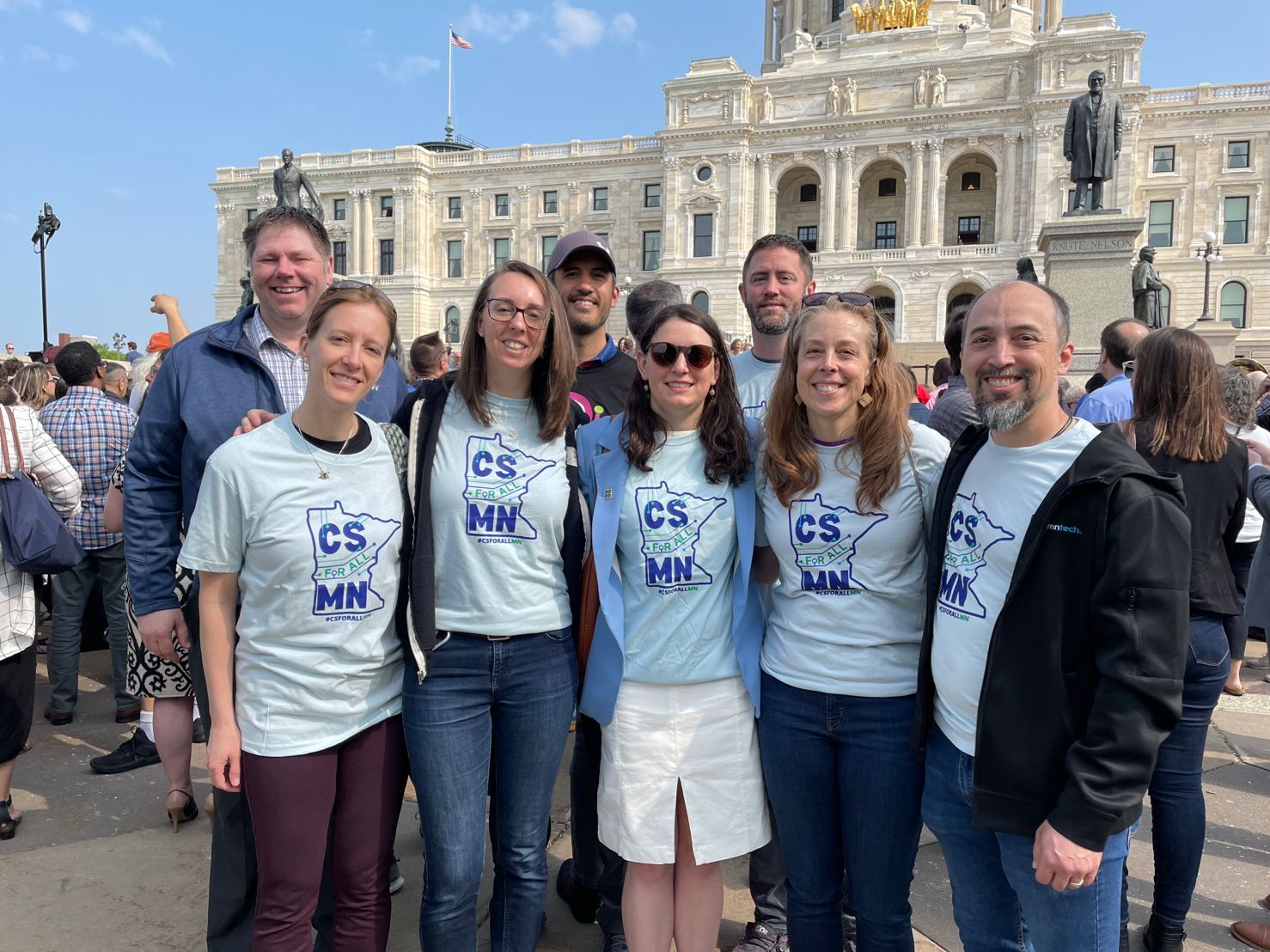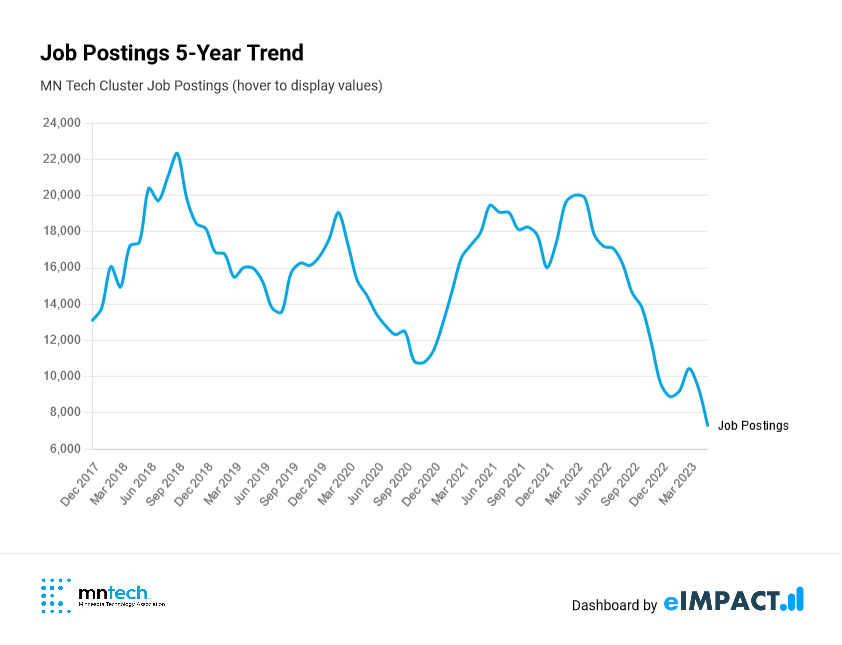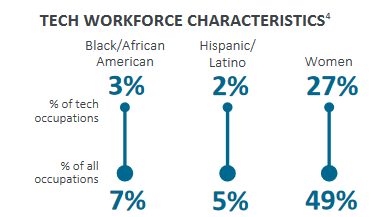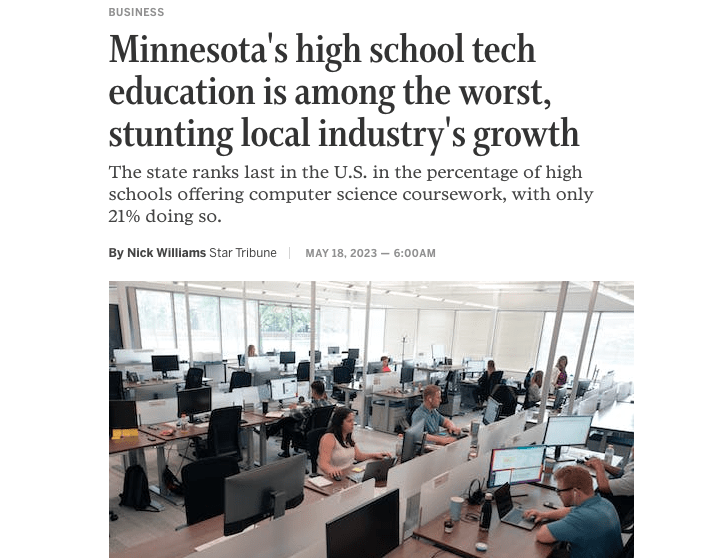By – Joel Crandall, VP of Talent, Minnesota Technology Association
Welcome to our quarterly MnTech Talent blog where we look at the current ‘State of Tech Talent in Minnesota’.
We are experiencing peak daylight hours—over 15.5 hours per day—as we wrap up Q2. Lots of sunshine along with the driest spring in 50 years means creeks and tributaries that flow into Minnesota’s 11,842 lakes have contracted and are running slowly.
Jobs in tech seem to be running the same way.
After a small uptick in March, unique role postings in April and May have continued to be the lowest in the last 5 years. May’s number of 7,230 postings is more than 10,000 roles lower than last May. In talent development, as with weather, it can be easy to be preoccupied with the present pattern. For companies, increased effort to develop and maintain current talent as the burden of new hires slows makes sense. For technologists, sharpening networking and professional development disciplines is appropriate.
And yet— the outlook for the next 10 years has not changed, and demands that we plan ahead.
- Net growth is projected to be slow in tech careers (6%), well below the national average and good enough for a national rating of 46th for this measurement.
- The replacement need for technologists will be high with more than 81,000 roles needing to be refilled due to technologist retirement, relocation, or leaving the industry.
- Between these two areas—more than 88,000 new technologists will be needed or 3 new technologists for every 4 currently working.
- Add to this last in the country high school computer science education and a pressing lack of technologists diversity – and it becomes clear that our whole ecosystem – government, schools, nonprofits, and companies—will need to work together to ensure industry vitality and economic opportunity.
Here are 5 other talent trends and headlines from Q2, 2023:
1. Minnesota Department of Employment and Economic Development to invest $20M in workforce development plans focused on employees entering top 5 industries: As part of their Drive for Five initiative, DEED received funding that specifically calls out work with trade organizations as they put together tracks into employment in industries including tech. Other tech talent related investments include additional funding for youth career programming. We look forward to additional details about how these dollars can support valuable endeavors.
2. Retaining Key Talent: Talent Developer Network: MnTech has a community of tech talent developers at large organizations that meet quarterly to discuss timely topics and share ideas. This group met in May to discuss strategies for retaining key talent. Here is a summary of ‘what’s hot’ and ‘what’s not’ from their perspective.
WHAT’S HOT
Focus on quality ‘stayers’ through programming like Executive Leadership Cohorts: six to seven leaders paired with a VP for access and coaching and monthly manager connects featuring timely topics shared in virtual, hour-long sessions on topics like budgets, internal processes, and leadership development
Employees receiving learning experiences through ‘Gig work’ for individuals and teams to create a sense of new and interesting, and cross-functional role splitting to increase awareness and camaraderie across organization
Recognition and incentivize growth by highlighting certifications and learning milestones earned by employees in fun and creative ways as well as using programs like Nectar to incentivize affirmation for team members and leaders
Companies demonstrating awareness and dexterity of hybrid/in-person/remote approaches. Related: positive feedback around in-person conference and events
WHAT’S NOT
Focus on retention as a topic. Significant slowdown in people transitioning between organizations
Employees using formalized learning programs like LinkedIn learning
Employees filling out formal development goals
Managers guarding and insulating the talent they currently ‘own’ on their team
3. CompTIA releases its Cyberstates report for 2023: Many key data points for MnTech’s State of Tech Workforce report are derived by research that national tech development firm CompTIA conducts on an annual basis. You can read more specific information about Minnesota (40) and Minneapolis (96) in the report—or by checking out their dashboard.
One specific finding—tech diversity in our region is well behind broader labor participation rates. Inclusion of Black, Hispanic and Female talent would need to double or nearly double to just match the broader market.
4. Jeff Tollefson, MnTech’s CEO, speaks to Star Tribune about tech talent development: Nick Williams wrote a piece in the Star Tribune in May: ‘Minnesota’s high school tech education is among the worst, stunting local industry’s growth’. We are grateful for the opportunity to share about the need for growth of early talent development—and specifically—the impact that it has on local businesses. MnTech member organizations Jamf and Artic Wolf are also quoted – directing attention to the competition the region is in not just with other US locations, but also with offshoring options.

5. Last minute progress on Computer Science Education Advancement Act brings first ever funding: After consistently raising the alarm about computer science education, we are pleased to report that for the first time ever, Minnesota is investing in computer science education. The CSEAA, part of the educational omnibus bill, calls for funding focused on developing a roadmap toward all high schools offering coursework in the next five years. After positive early hearings, there were late worries that no bill would pass as one chamber approved the bill but allocated 20% of funded ask, and the other chamber did not even pass the legislation. MnTech would like to specifically thank Representative Liz Lee for her leadership in helping to ensure the legislation made it through conference committee.
MnTech is part of an advocacy coalition, CSforAll-MN, that released a summary of what is included in the bill. As part of the legislation, the State is looking for industry professionals to apply to be apart of this steering committee. You can view the application for this form here.
No one action will solve the tech talent challenges we’re facing, these are important building blocks as we strive to equitably double the development of technology talent in Minnesota over the next 10 years. Look for more information about MnTech Tech Talent conference taking place on October 6th at Best Buy dropping soon!




























